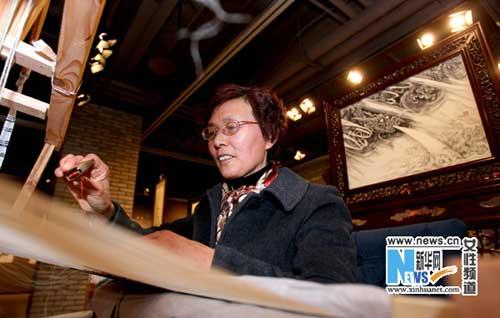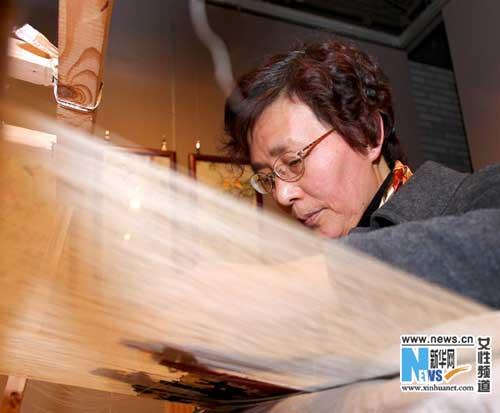Suzhou handicraft shown in Beijing
Suzhou, a city in East China that is saturated with history, has brought its ancient handicraft to the capital. Kesi, or "cut silk" and nut carvings are on display in Beijing, with artists showcasing their skills right on the spot.
|
 |
|
Nut carvings are exquisitely carved from peach pits, almonds, olive pits and hickory nuts. |
Kesi is a traditional silk weaving technique of cut designs that resemble carved artwork upon a silk tapestry. Archaeological evidence indicates that Kesi originated in the Suzhou area some two thousand years ago.
Throughout the city's history, the tapestries have been highly desirable among the elite class due to the intricate workmanship, refined style, and coloring.
 |
| Kesi is a traditional silk weaving technique of cut designs that resemble carved artwork upon a silk tapestry. |
For Kesi artists, the craft is a test of their techniques, as well as their patience.
Cao Meijie, Kesi Artist, said, "It normally takes years to complete a single piece of Kesi. And usually it demands that several craftsmen work together due to the complicated techniques."
Nut carvings are exquisitely carved from peach pits, almonds, olive pits and hickory nuts. Limited by the small sizes of the nuts, the sculptures are generally relief carvings that greatly depend on the shape and textures of the nuts.
 |
|
For Kesi artists, the craft is a test of their techniques, as well as their patience. |
Both Kesi and nut carvings are outstanding representatives of the cultural feats achieved by Suzhou.
Yan Li, Mayor of Suzhou, said, "Preserving traditional culture is now a priority on our agenda of developing Suzhou. We view that culture defines not only the past of a city, but also its future."
The city authorities have also set up a fund rewarding those contributing to the development of Kunqu opera, another key artistic export of Suzhou.
















